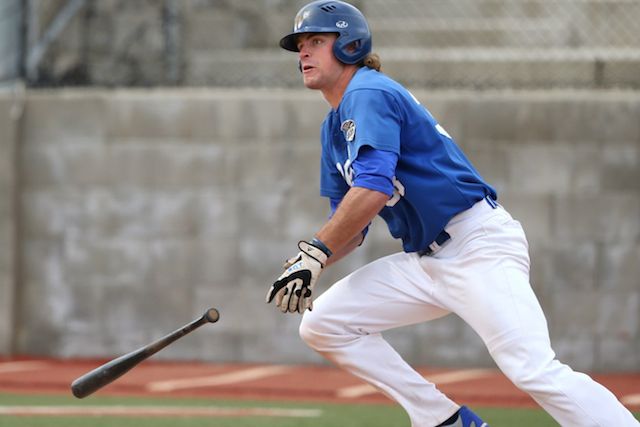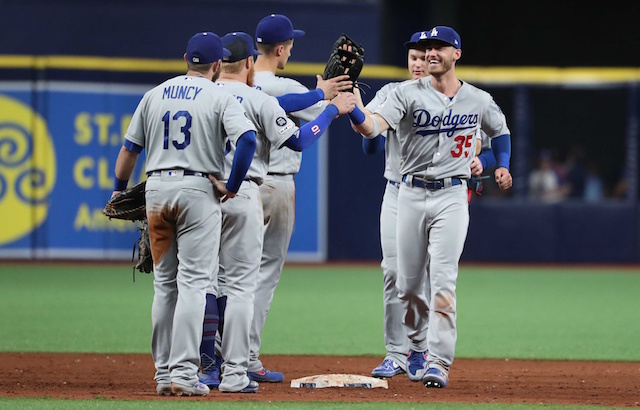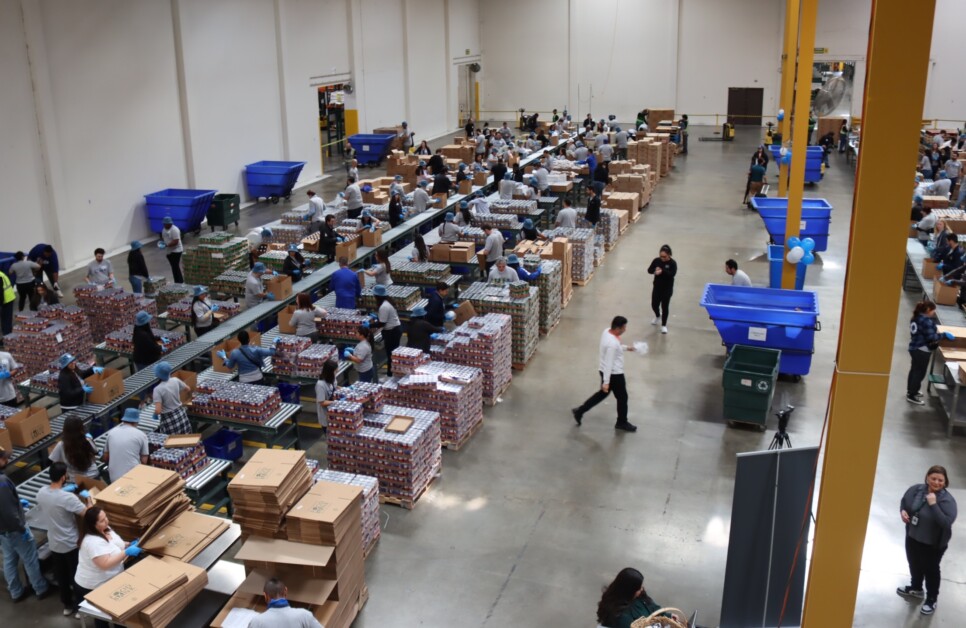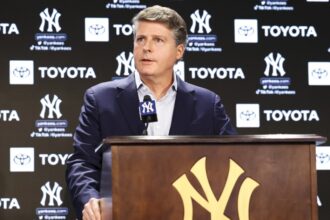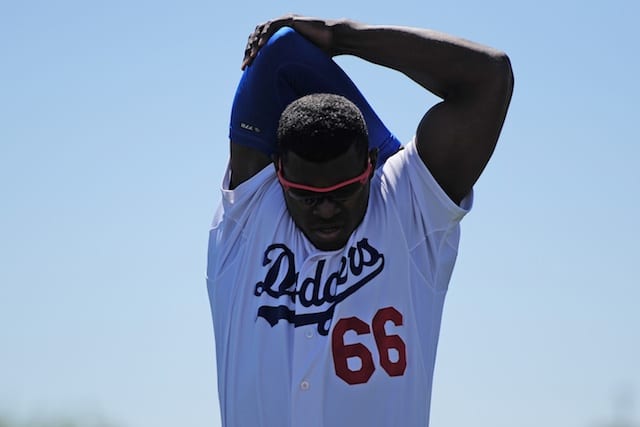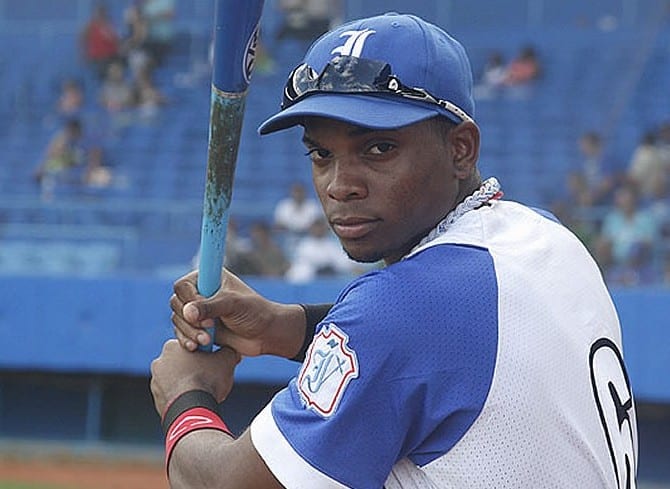
15. Imani Abdullah, RHP
Imagine being in class during your senior year of high school and getting a call from Magic Johnson, telling you that you’re now part of the Dodgers organization. That’s how the young righty was drafted, out of the San Diego area, in the 11th round in 2015.
He went to the Arizona League in his debut and pitched sparingly, posting a 4.85 ERA in 13 innings. Last season, Abdullah spent the early part of the season in extended Spring Training before joining Great Lakes on May 19.
The 19-year-old went on to make 16 starts for the Loons, posting a 3.61 ERA with 59 strikeouts in 72.1 innings.
His fastball sat around 90 mph in high school, but given his height and slim frame, he always projected to throw harder. Abdullah is now sitting comfortably in the low 90s and touching higher, with perhaps some velocity still to come.
He throws both a big breaking curve in the low 70s as well as a changeup in the mid 80s. Neither pitch stands out right now, but with Abdullah, the name of the game is projection.
It’s easy to say any tall and skinny pitcher will naturally progress due to physical maturation, but Abdullah has already shown signs of improvement. He only began pitching as a high school junior and has made progress with his arsenal over the past few years.
At 20 years old, Abdullah will be challenged with an assignment to Rancho Cucamonga, where he’ll be one of the youngest pitchers in the California League.
14. Starling Heredia, OF
Nicknamed “The Pitbull,” Heredia was one of the top Dominican prospects in the 2015-16 international signing period. The 16-year-old agreed to terms with the Dodgers on a $2.6 million bonus.
Heredia remained in the Dominican and made his debut in the DSL, where he hit well early but struggled down the stretch. His OPS dropped from .913 in June to .667 in August/September. Heredia hit far better against lefties (1.147 OPS) than righties (.648 OPS).
The teenage outfielder was compared physically to Kirby Puckett by Dodgers’ senior vice president of baseball operations Josh Byrnes. Listed at 6’2 and 200 lbs., Heredia looks shorter and stockier, with one evaluator comparing him to Juan Uribe. But despite the unconventional frame, his tools stand out.
Heredia has plenty of strength already and projects to have plus-power down the line. He controlled the strike zone well during his debut, striking out in fewer than 20 percent of his plate appearances. Heredia can also run a bit, which is odd to see with his body type, though he does project to slow down a little as he gets older.
While he played left in the majority of his games last year, he has enough present speed to take on center field in the low minors. However, in time, he’ll settle in to right field where his plus arm fits perfectly.
Having turned 18 last month, the Dodgers could ease Heredia into stateside ball, leaving him in extended Spring Training until rookie leagues begins in June. However, the Dodgers have shown a propensity to push some of their top, young prospects, and Heredia could make his full season debut with the Loons this spring.
13. Will Smith, C
No, he’s not THAT Will Smith. Or the other one (San Francisco Giants reliever). The Louisville backstop was a late riser last spring and found himself climbing into the first round after a strong junior campaign, taken four picks ahead of Jordan Sheffield.
Smith began his debut with Ogden, where he spent a week getting his feet wet before hitting the road for full season affiliates. He spent about a month with Great Lakes, where he hit .256/.371/.305 before finishing the year in Rancho, where his OPS dropped to .650.
In many ways, Smith’s profile is very similar to Austin Barnes. His offensive approach is almost exclusively oriented to contact. He hit four homers in 55 games, though one came in Ogden and the other in High Desert in the California League, which are each equivalent to homering in Coors Field.
Smith does get on base at a good clip, walking in more than 10 percent of his plate appearances across three levels. Defensively, Smith offers plus athleticism behind the plate and has played second and third base in the pros, another parallel to Barnes.
His arm strength isn’t special but he has a quick transfer, which led to him catching more than 40 percent of attempted base stealers. He’s also an above average runner.
Starting a season in Ogden can feel like beginning the roller coaster at the top of the loop, and Smith’s numbers quickly fell off once he left the hitter’s haven. A strong 2017 could help re-establish himself within the organization, especially with Barnes likely to graduate.
12. Jordan Sheffield, RHP
No, he’s not related to Gary. Now that that’s out of the way, Sheffield was the Dodgers’ third pick in the first round of the 2016 Draft. He was also the second first-rounder taken out of Vanderbilt in the past two years by the Dodgers. Got all that? Good.
Selected No. 36 overall in 2016, Sheffield made a start in the Arizona League during his debut before moving up to Great Lakes. With the Loons, he made seven starts, but none lasting more than two innings (to conserve his innings), and posted a 4.09 ERA while striking out 13.
Sheffield attacks hitters with a fastball that’s consistently in the mid 90s. He does a pretty good job of holding his velocity despite modest size (listed at 6’0, 185 lbs.). Sheffield’s changeup is his secondary offering of choice, featuring hard sink and fade and solid velocity separation from his heater. His breaking ball is clearly his third pitch and needs some development.
Scouts and evaluators question Sheffield’s ultimate role. His believers see the slider and command developing to the point where he could stay in a rotation and develop into a No. 3 starter. However, while he has two plus pitches, the lack of a consistent breaking ball and below average command lead some to believe that he’s going to end up in the bullpen, where he’d make a pretty good setup man. This ranking reflects that prognostication.
This season will be a very important year for Sheffield. If he shows enough progress with his deficiencies, he’ll be given every chance to remain in the rotation. However, if he fails to improve or an injury crops up (he’s yet another Tommy John alumnus), he could be fast-tracked as a reliever.
11. Yusniel Diaz, OF
Only Yadier Alvarez got a bigger bonus than Diaz’s $15.5 million during the 2015-16 signing period. He spent a part of one season playing in his home country, hitting .348/.447/.440 in 65 games as a 17-year-old, before defecting in April of 2015.
After agreeing to a $15.5 million bonus in November 2015, the 19-year-old Cuban was sent to Rancho Cucamonga on an aggressive debut assignment. With the Quakes, Diaz played 82 games and batted .272/.333/.418 with eight doubles, seven triples and eight home runs. He added seven stolen bases and was caught stealing eight times.
He struggled out of the gate, but hit his stride toward the middle of April and began tearing the cover off the ball. Diaz then missed a week due to a shoulder strain, before returning and picking up where he left off. From April 14 to May 10, Diaz hit .379/.432/.636.
But it seemed his shoulder wasn’t quite healthy. He missed a few games, returning May 13 and almost completely stopped hitting. For the next month, Diaz slashed just .195/.278/.241 with three extra-base hits before finally going on the disabled list.
After a three-game rehab assignment, he returned to the Quakes and hit .295/.340/.466 over the remainder of the season. I was able to see Diaz during Spring Training last year and my opinion of him after watching more than a dozen of his at-bats was that he didn’t really know who he was.
Nearly every ball he put into play was a grounder to the right side. When a scout described his swing, he gestured with his arm like he was mimicking a tennis backhand. Only on a few occasions did I see Diaz really rotate and try to pull the ball.
Diaz isn’t an explosive athlete like Yasiel Puig, but he has promising tools across the board. The power is there if he taps into it, and he does a good job of making contact. Diaz is a pretty good runner underway, with the ability to handle center field at present. His arm is inconsistent, but in time he should be able to settle in to right field.
Still just 20, Diaz will likely start the season with the Drillers as one of the youngest players at the Double-A level. If he stays healthy, Diaz could breakout this season and give the Dodgers yet another potent bat in the high Minors.
You can listen to Jared on the weekly Dugout Blues Podcast



